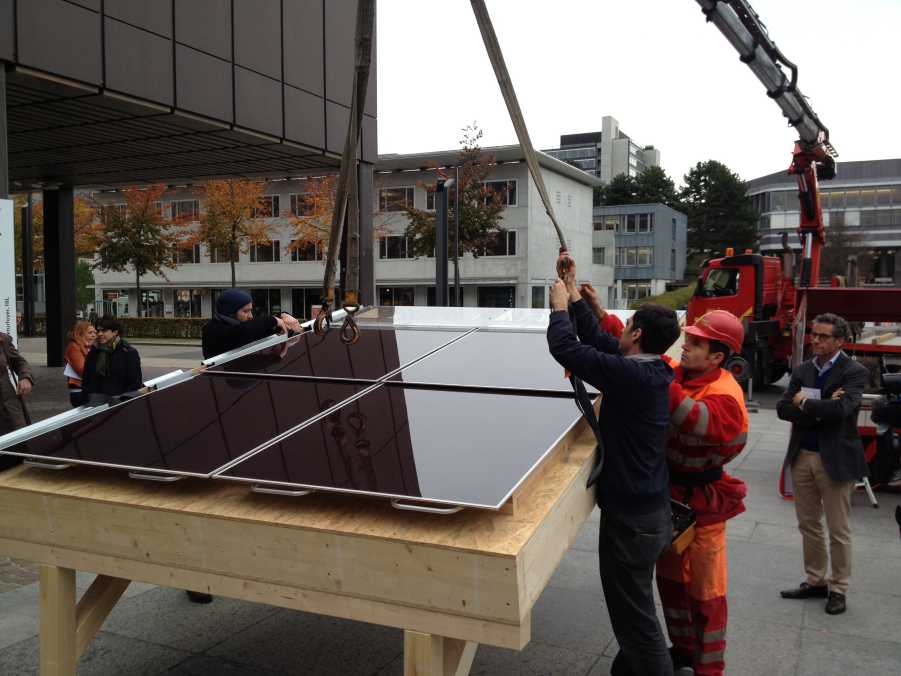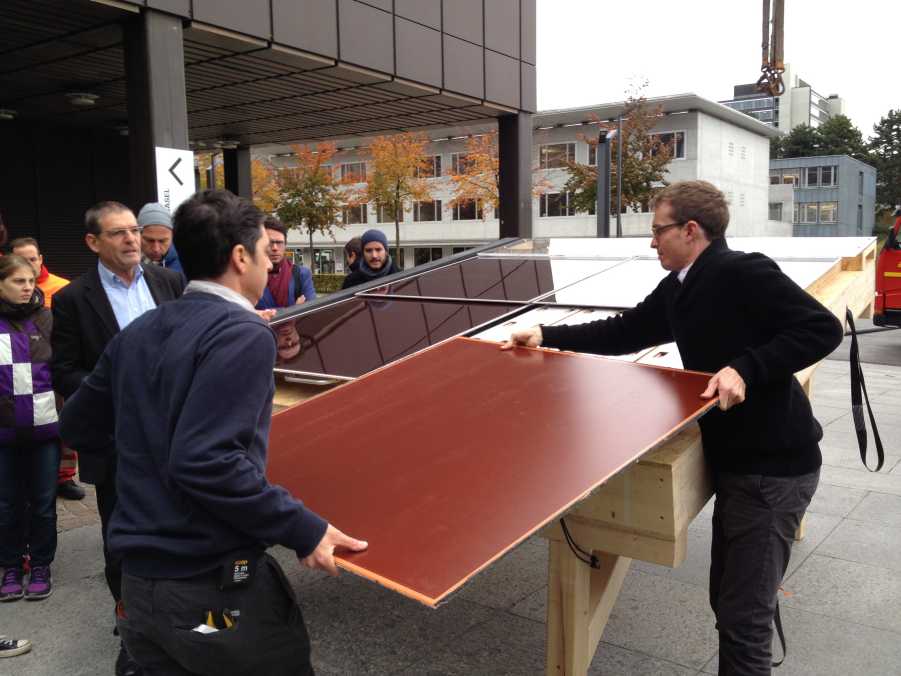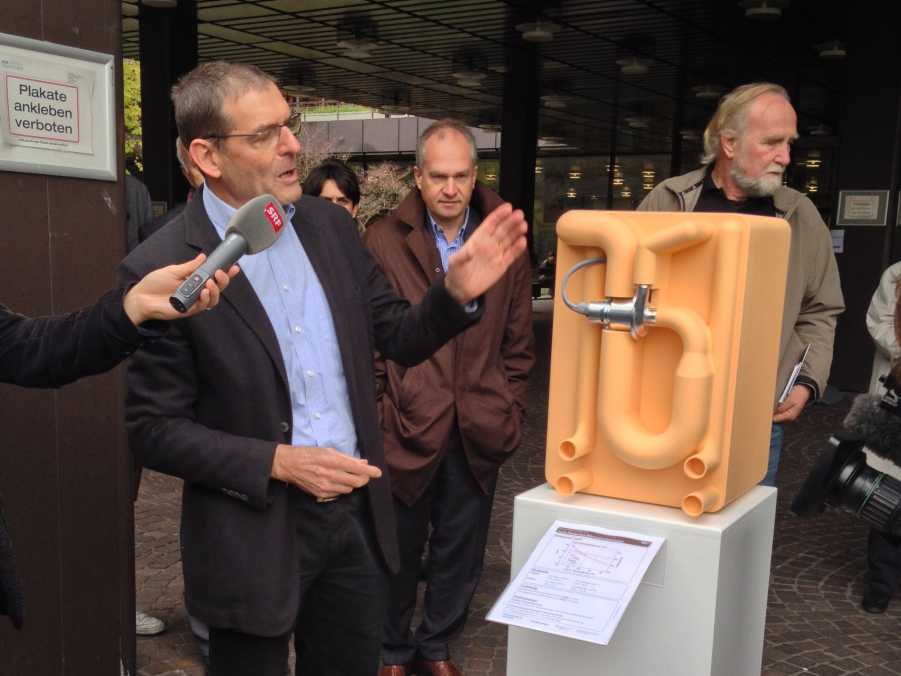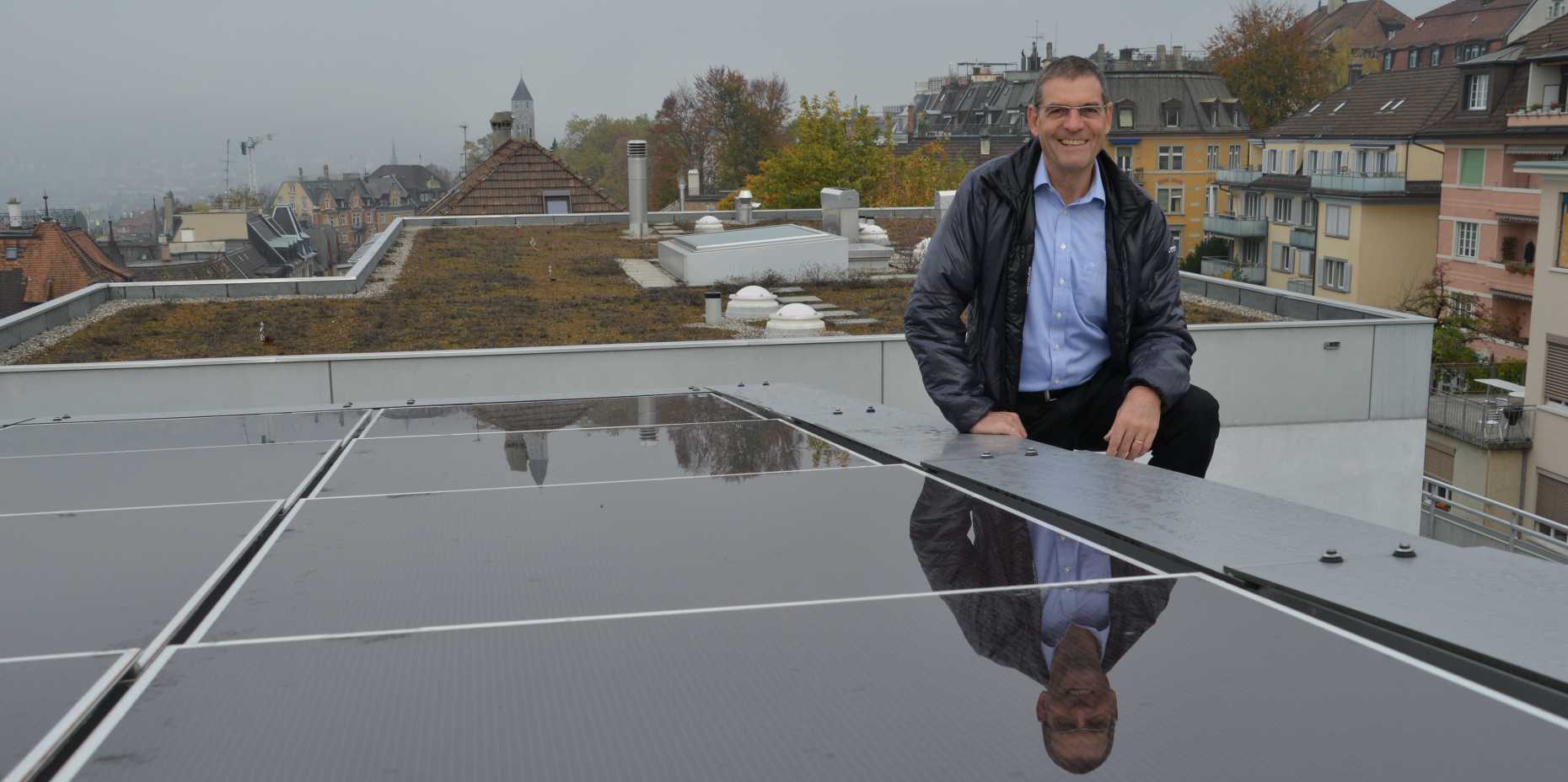Toolbox for CO2-free buildings
A set of new building technologies makes it possible that buildings can be heated and cooled without the emission of CO 2. An alliance of Swiss companies under the banner of 2SOL aims to market the core components developed at ETH.
Approximately 40 per cent of CO2 emissions in Switzerland can be attributed to the heating of buildings, which is why refurbishing buildings plays an important role in the domestic strategy undertaken by Switzerland's federal government to reduce greenhouse gas emissions. Better thermal insulation in buildings and more efficient oil and gas burners are examples of potential refurbishments. ETH Zurich offers another possibility: a set of building technologies that enables virtually CO2-free heating and cooling. Excess solar energy is stored in the ground over the summer and then used to heat buildings in the winter. Conversely, the building can be cooled in the summer by way of a water circuit that facilitates a thermal exchange with the underground accumulator that has been depleted of heat.
Integrating collectors into roof constructions
One initial key element of the overall 2SOL system is a hybrid collector developed at ETH, which serves as a photovoltaic system that delivers solar power; at the same time, it is a solar collector that feeds heat to an underground accumulator. For the first time, researchers have succeeded in building a hybrid collector that is part of the actual roof construction. Instead of mounting the collector on top of the existing roof construction, the roof and the collector are a single entity. The photovoltaic panels, insulation and supporting structure form a unit that can be installed for virtually any type of house.
What is referred to as a coaxial borehole heat exchanger serves as the junction for water that transfers the collected thermal energy to the seasonal underground accumulator. A borehole heat exchanger can go as deep as 500 meters underground. The exchanger is made of polyester thread and resembles a fire hose. Until now, borehole heat exchangers were made of hard plastic tubes, which required pouring concrete to fill in the space between the exchanger and the borehole. In the case of the newest borehole heat exchanger, overpressure presses the movable and soft material directly against the wall of the borehole.
Demonstration of the new toolbox
-

Demonstration of the new hybrid collector – integrated into a roof module. (Photo: ETH Zurich) -

Photovoltaic panels of different colours can be changed. (Photo: ETH Zurich) -

ETH Professor Hansjörg Leibundgut in front of the model of a turbo low-temperature-lift heat pump. (Photo: ETH Zurich)
Motor with turbo compressor
Heat stored in the ground must flow back into the building in order to provide heating during the winter. As a result, the accumulator is depleted each winter, allowing it to be replenished again the following summer. However, the water pumped from underground is not hot enough to heat a home. This is where the third key component of the 2SOL system comes into play: a low-temperature-lift heat pump, which heats the water to the required temperature between 28 and 35 degrees Celsius. The heat pump has an electric motor and coupled turbo compressor developed by ETH. This compressor operates at 200,000 revolutions per minute. The turbo low-temperature-lift heat pump requires very little energy to increase the heat from the underground accumulator to the desired temperature.
The comprehensive 2SOL system also optimises the coordination of the various building technologies thanks to an intelligent controlling and monitoring system. Approximately 80 square meters of hybrid roof panels, combined with the latest borehole heat exchanger and the turbo low-temperature-lift heat pump, is expected to heat about 750 square meters of space – roughly equivalent to one three-storey, seven-family dwelling. If the external power required to operate the heat pump comes from renewable sources, heating and cooling buildings without CO2 emissions becomes a reality.
Joining forces for the market launch
Roughly a dozen companies have teamed up to form an alliance under the banner of 2SOL. Their mission is to continue developing the various technologies and bring them to market. The companies bring a diverse range of expertise to the table; what they share, however, is their conviction that the ETH method is the future of the emissions-free heating and cooling of buildings.

Comments
No comments yet